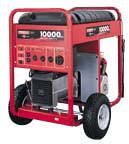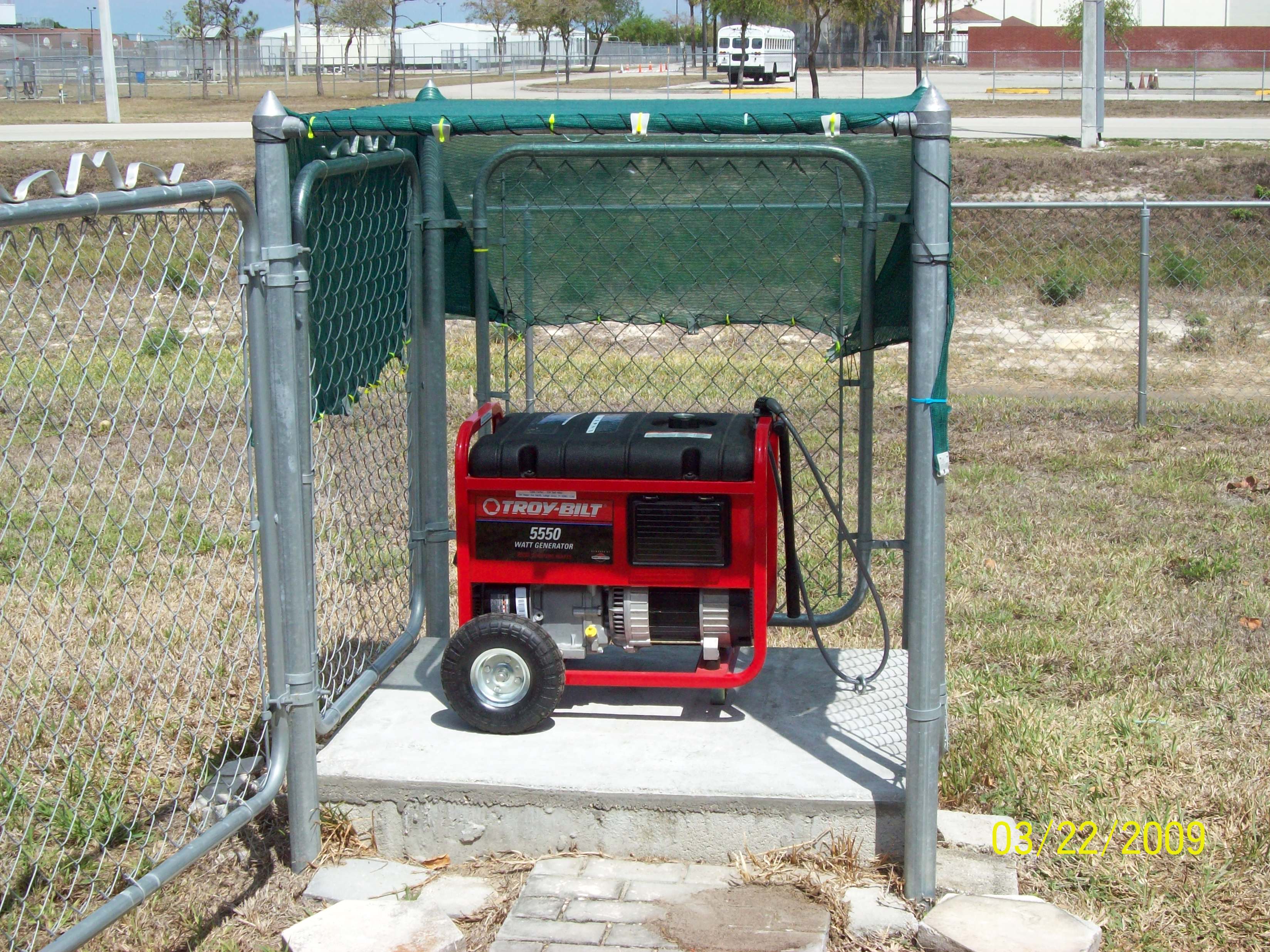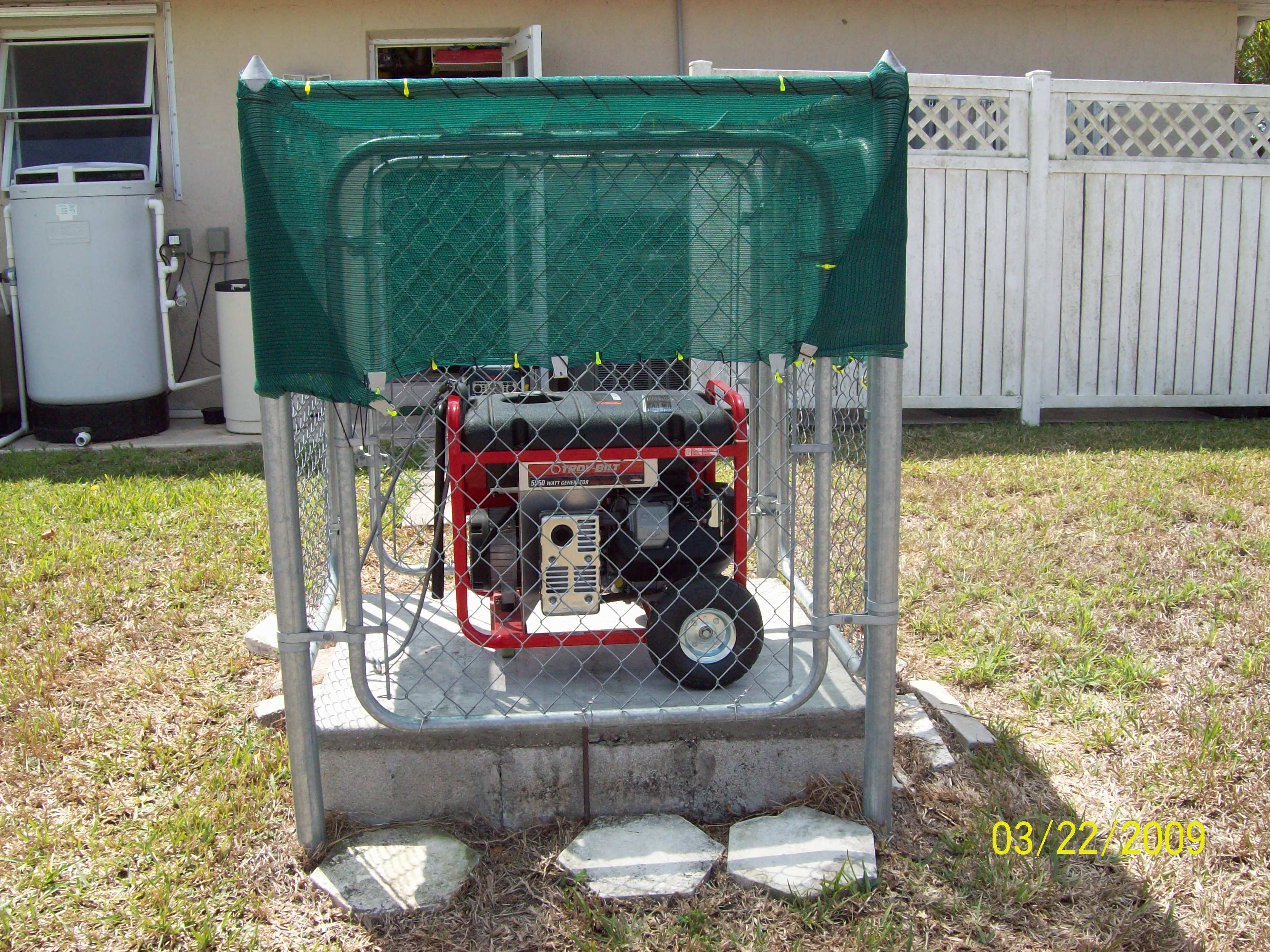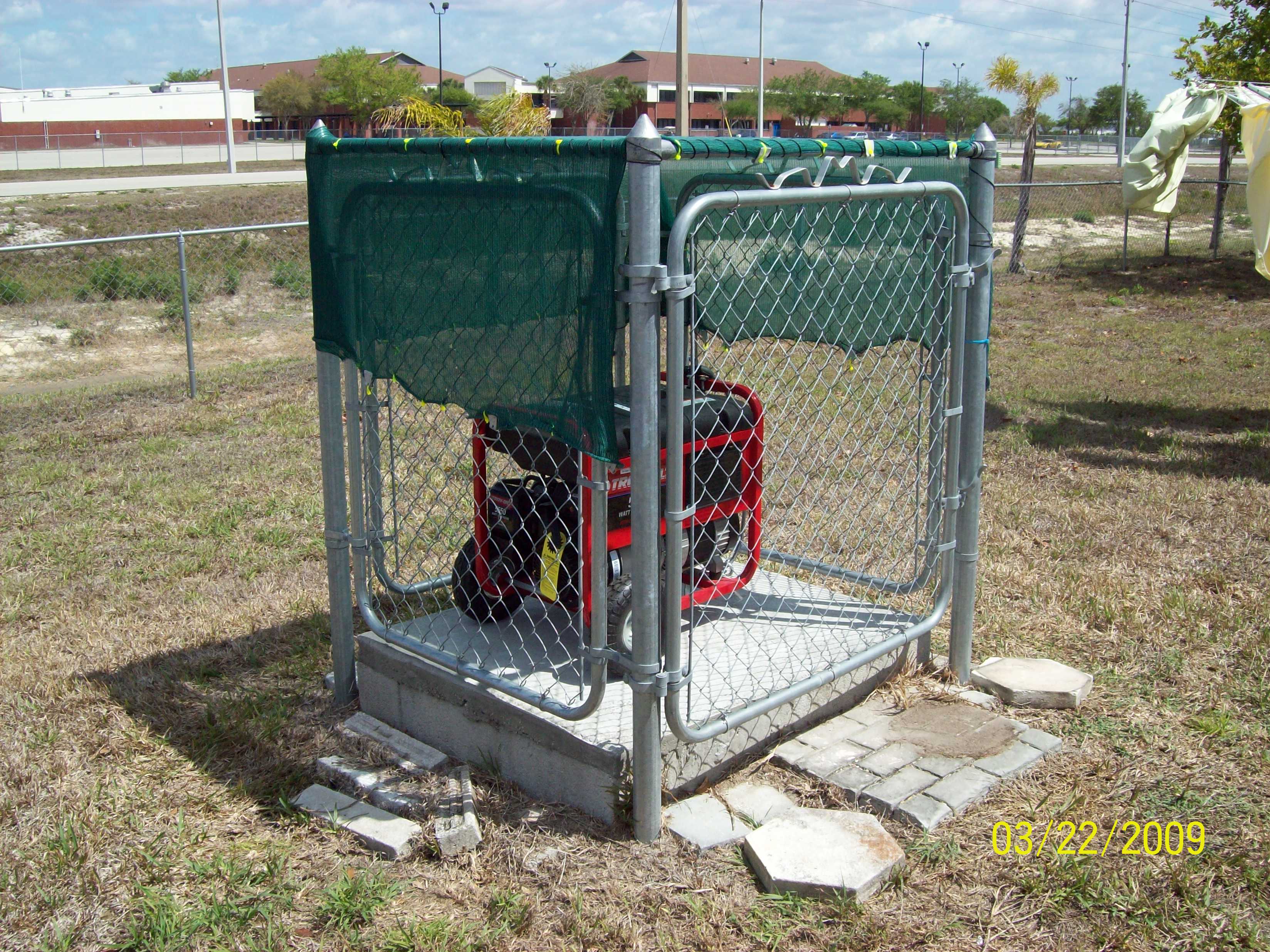Generator Cage
It is disaster time and you need to use your generator. So you think where am I going to put it for use? And how am I going to use it? Will I be safe using it ?
 Portable Electric Generator Safety Tips
Portable Electric Generator Safety Tips
Portable electric generators offer great benefits when outages affect your home. Below are guidelines for safely connecting and operating portable generators.
Don't connect your generator directly to your home's wiring. Connecting a portable electric generator directly to your household wiring can be deadly to you and others. A generator that is directly connected to your home's wiring can 'backfeed' onto the power lines connected to your home.
Utility transformers can then "step-up" or increase this backfeed to thousands of volts—enough to kill a utility lineman making outage repairs a long way from your house. You could also cause expensive damage to utility equipment and your generator.
The only safe way to connect a portable electric generator to your existing wiring is to have a licensed electrical contractor install a transfer switch. The transfer switch transfers power from the utility power lines to the power coming from your generator.
The Double-Throw Switch, a "must" for generator operation
Double-throw means that the operator can place or "throw" the switch into two different positions. One position feeds power from the utility system to the load while the other position feeds power from the standby generator to the load. This switch does not allow for a backfeeding to occur; backfeeding occurs when electricity travels from the generator back through the transformer and onto the power lines where linemen maybe working. The transformer increases house voltage back up to 7,200 volts on the power lines during back feeding. This switch will also prevent damage to a consumer's generator when the utility re-energizes its system during an outage.
Typically the transfer switch is located between the utility meter and loads to be served. It should be within 25 feet or less of the generating unit for convenience and safety.
Never plug a portable electric generator into a regular household outlet. Plugging a generator into a regular household outlet can energize "dead" power lines and injure neighbors or utility workers. Connect individual appliances that have their outdoor-rated power cords directly to the receptacle outlet of the generator, or connect these cord-connected appliances to the generator with the appropriate outdoor-rated power cord having a sufficient wire gauge to handle the electrical load.
Don't overload the generator. Do not operate more appliances and equipment than the output rating of the generator. Overloading your generator can seriously damage your valuable appliances and electronics. Prioritize your needs. A portable electric generator should be used only when necessary, and only to power essential equipment.
Never use a generator indoors or in an attached garage. Just like your automobile, a portable generator uses an internal combustion engine that emits deadly carbon monoxide. Be sure to place the generator where exhaust fumes will not enter the house. Only operate it outdoors in a well-ventilated, dry area, away from air intakes to the home, and protected
from direct exposure to rain and snow, preferably under a canopy, open shed or carport. Keep the generator at least 10 feet from the structure and with the exhaust pointing away.
Under no circumstances should portable generators be used indoors, including inside a garage, carport, basement, crawlspace, or other enclosed or partially-enclosed area, even with ventilation. Opening doors and windows or using fans will not prevent CO buildup in the home. The CO from generators can rapidly lead to full incapacitation and death, but CO can't be seen or smelled. Even if you cannot smell exhaust fumes, you may still be exposed to CO. If you start to feel sick, dizzy, or weak while using a generator, get to fresh air RIGHT AWAY - DO NOT DELAY.
Because you may have windows open to get fresh air while the power is out, be sure to place the generator away from windows, doors, and vents that could allow CO to come indoors. To avoid electrocution, keep the generator dry and do not use in rain or wet conditions. To protect the generator from moisture, operate it on a dry surface under an open canopy-like structure, such as under a tarp held up on poles. Dry your hands if wet before touching the generator.
It is a good idea to install battery-operated CO alarms or plug-in CO alarms with battery back-up in your home, according to the manufacturer's installation instructions. If CO gas from the generator enters your home and poses a health risk, the alarm will sound to warn you. Test the battery frequently and replace when needed.
Use the proper power cords. Plug individual appliances into the generator using heavy-duty, outdoor-rated cords with a wire gauge adequate for the appliance load. Overloaded cords can cause fires or equipment damage. Don't use extension cords with exposed wires or worn shielding. Make sure the cords from the generator don't present a tripping hazard. Don't run cords under rugs where heat might build up or cord damage may go unnoticed.
Read and adhere to the manufacturer's instructions for safe operation. Don't cut corners when it comes to safety. Carefully read and observe all instructions in your portable electric generator's owner manual.
To prevent electrical shock, make sure your generator is properly grounded. Consult your manufacturer's manual for correct grounding procedures.
Be sure to turn the generator off and let it cool down. Do not store fuel indoors or try to refuel a generator while it's running. Gasoline (and other flammable liquids) should be stored outside of living areas in properly labeled, non-glass safety containers. They should not be stored in a garage if a fuel-burning appliance is in the garage. The vapor from gasoline can travel invisibly along the ground and be ignited by pilot lights or electric arcs caused by turning on the lights. Avoid spilling fuel on hot components. Put out all flames or cigarettes when handling gasoline. Always have a fully charged, approved fire extinguisher located near the generator. Never attempt to refuel a portable generator while it's running.
Turn off all equipment powered by the generator before shutting down your generator.
Avoid getting burned.
Many generator parts are hot enough to burn you during operation.
Keep children away from portable electric generators at all times.
Safety
Think Safety First!
~ Don't use a generator indoors. Burning fuel produces carbon monoxide, which is deadly. Operate the generator in a well-ventilated area.
~ Be sure you have a properly installed transfer switch before you hookup your generator.
~ Check your wiring to be sure it's in good condition. If you have damaged wiring, be sure all repairs are done prior to attaching the generator to your load. Comply with the National Electric Code standards and use only a qualified electrician.
~ Voltage drop may occur if an extension cord connected to the appliance is too long, or the wires are too small. The longer the cord, the bigger the wires need to be. If the extension cord becomes very warm during use, it is inadequate and poses a fire danger. ~ Many engine parts are very hot during operation, and severe burns may result if touched. Keep children away from generators at all times.
~ Electric motors require extra power on startup. Be sure to calculate your load and startup requirements before your generator is attached to the double-throw switch. Don't overload the generator.
~ Never fuel an electric generator while the generator is running. ~ Check the oil level in the engine each time you use or refuel the generator.
~ Do not remove or tamper with safety devices. They are there to protect you and your property.
~ To keep your generator ready for emergency use, operate a generator of an engine powered unit once per month and operate the generator of a tractor driven unit at least once every three months.
~ Keep record of hours used, lubrication, change of oil, filters, according to equipment specifications.
~ Seek the advice of a certified electrician if you are in doubt of any portion of your electrical system.
Above all - secure your generator outdoors, either locked with chain and lock or bolted to a secured base pad. Generator should be 25 feet from the building with the exhaust pointed away from the building
Photos of a well secured generator courtesy of Linda Carter
 |
 |
 |
| Elevated and locked to pad inside a secured caged and double locked door. | Elevated, locked in a secure cage, exhaust pointed away from building and grounded. | Angle view, elevated, secured and exhaust away from the building. |
| This generator is connected to the building through the use if a generator transfer switch and cable. | ||
